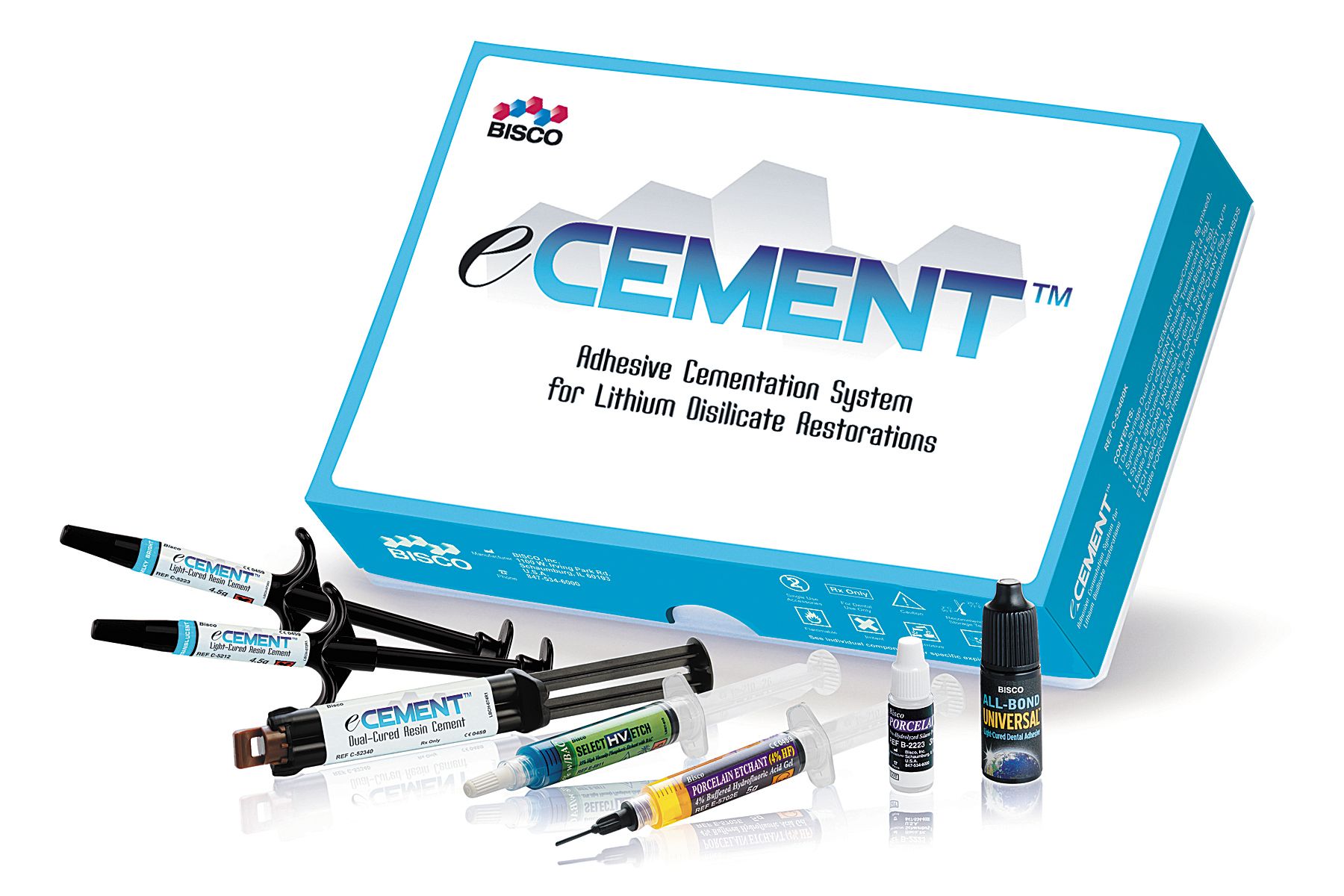How to bond a lithium disilicate restoration using BISCO eCEMENT
Patients are more involved In the development of their restorative treatment plans, and their expectations continue to increase. As a clinician, I believe an ideal restoration requires the perfect blend of durability, esthetics and strength.
Patients are more involved In the development of their restorative treatment plans, and their expectations continue to increase. As a clinician, I believe an ideal restoration requires the perfect blend of durability, esthetics and strength.
I continue to explore new materials that simplify the process and ultimately result in patient satisfaction.
When choosing the proper dental cement, it is critical to consider the material that is being used for the indirect restoration. Lithium disilicate ceramic (e.g. IPS e.max®) has become a widely used material because it offers the ability to mimic the lost tooth structure, achieving optimal esthetics, and its physical properties offer durability and strength. These restorations are delivered to the patient via an adhesive procedure, which requires tooth conditioning with an adhesive system, restoration conditioning with the proper primer and the use of a resin-based cement for luting purposes.
Although there are cases where a variety of material choices will perform equally well, there are also cases where specific needs must be addressed. BISCO recently introduced an adhesive cementation system, eCEMENT®, which provides all the necessary components to predictably deliver lithium disilicate restorations for bonding crowns, bridges or veneers.
eCEMENT is my system of choice because the cement is packaged with All-Bond Universal®, which allows me to bond to the tooth structure in either self-etch mode (crowns and bridges) or total-etch mode (veneers with preps limited to enamel). All-Bond Universal provides compatibility with both light-cure and dual-cure cements. The kit also includes hydrofluoric acid and silane, allowing me to properly bond to the lithium disilicate surface.
The decision to use eCEMENT dual-cure or eCEMENT light-cure will depend on the restoration. I use the eCEMENT light-cure for all veneers and the eCEMENT dual-cure for all crowns and bridges. The rationale for this is based on the thickness of the restorations. Veneers tend to be thinner, and the light from the light source will penetrate easier, activating the polymerization mechanism of the light-cure eCEMENT without any issues. Alternately, crowns tend to be thicker, especially close to the occlusal, where at least 1.5 mm of preparation space is needed in order to properly fabricate the restoration. eCEMENT dual-cure cures without light activation through self-cure mode. Both the light-cure and dual-cure material will provide optimum bonding between the prepared tooth structure and the lithium disilicate restoration.
Case Presentation
In this case, a healthy 53-year-old male presented to the office complaining chiefly of a desire to address esthetic concerns. Under clinical examination, generalized wear was observed in combination with multiple caries lesions and reduced vertical dimension. Upon further discussion with the patient, it was revealed that he habitually ingested large amounts of citric solutions, including lemon and chile.
Check out the following video to see how the procedure was preformed:
Step-by-step treatment

1) The first step in bonding a lithium discilicate restoration using eCement is to clean the restorations after receiving them from the lab.
2) Remove the provisionals and clean the preps.
3) Try in the restorations and adjust as needed. Clean the restorations of any saliva and/or blood residue if necessary.
4) Hydrofluoric acid etch the intaglio of the restorations for 25 seconds using BISCO’s 9.5% Hydrofluoric Acid Echant. Upon completion, wash and dry the restorations properly.
5) Apply BISCO Porcelain Primer to the intaglio of the restorations, and let it dwell for 30 seconds. Let the restoration air dry and leave undisturbed.
6) Bond using All-Bond Universal, using self-etch if it is a crown or total-etch if it is a veneer.
7) Light cure the adhesive to ensure a strong bond.
8) Apply eCement dual-cure on the intaglio of the restoration. Seat the restoration on the prep and tack cure cement for 3-5 seconds.
9) Remove any excess cement from around the restoration. Perform final curing on each surface for 30-40 seconds.
The patient was very pleased with the final result, thanks not only to the improved esthetics but his improved overall comfort.